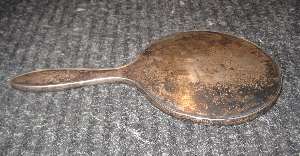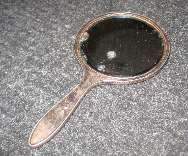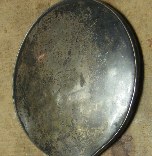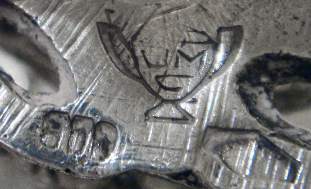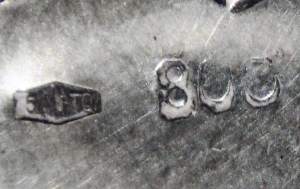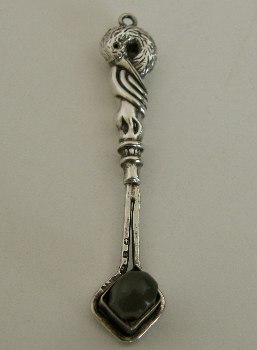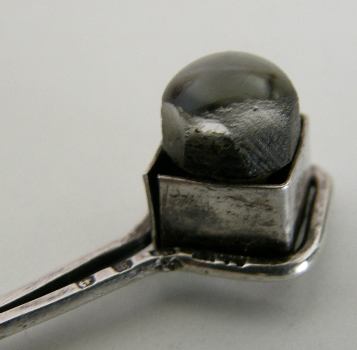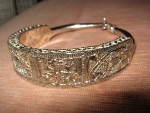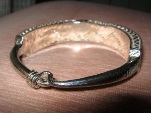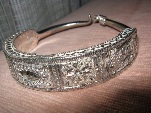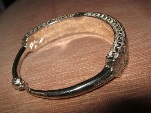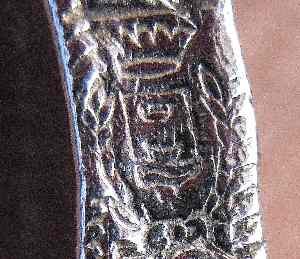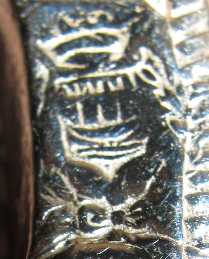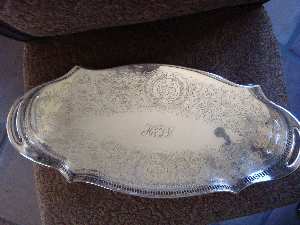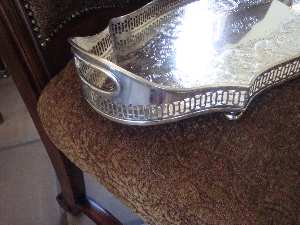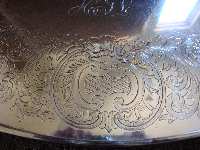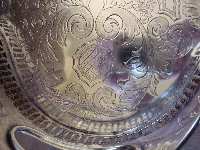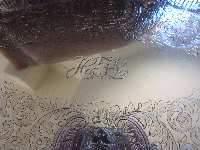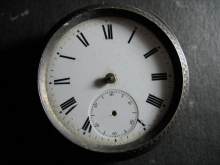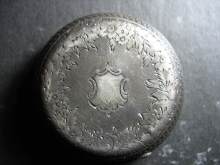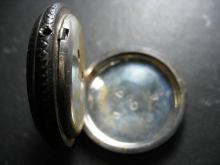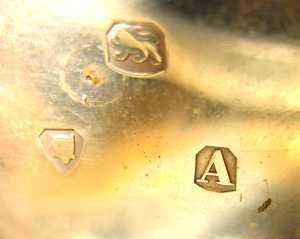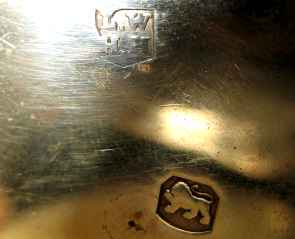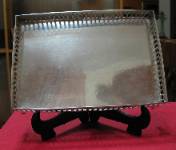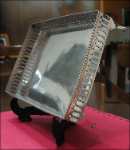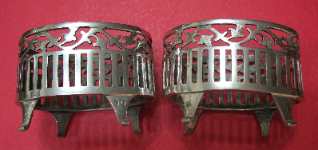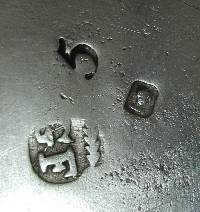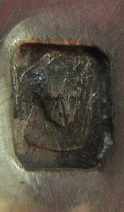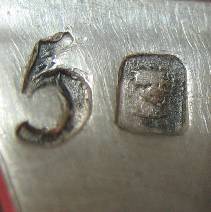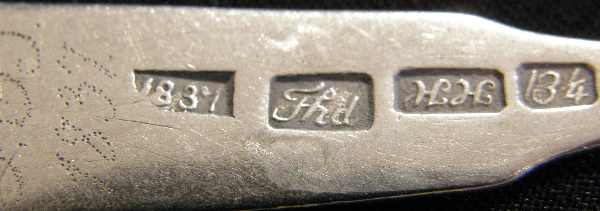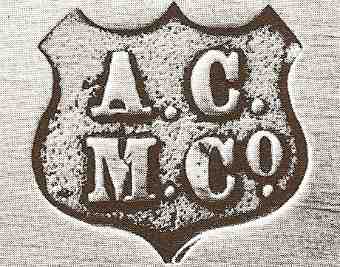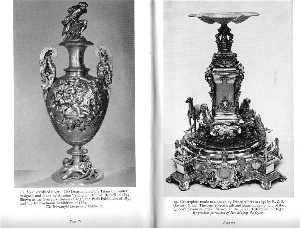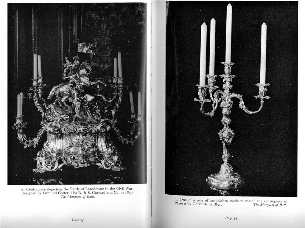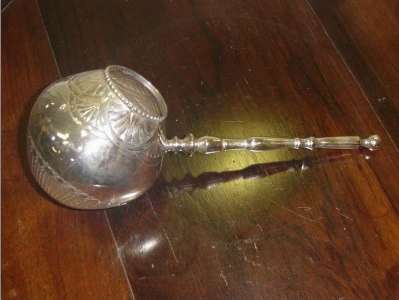
Ricardo Ferreira presents:
Silver Manufacture in Brazil

.....Since the beginning of colonization, silver has
occupied an important place in Brazilian society, being
the preferred metal for the decoration of homes and
churches, but until the early seventeenth century there
is no record of the existence of silverware made in
Brazil. The settlers were engaged only in exporting
sugar, hardwoods, and spices to Portugal.....
click here 
|
Welcome to new ASCAS members:
Marc August - USA
Robin Carter - South Africa
Cynthia Costa - USA
William & Jacquelyn Gauner - USA
Paula M. Habib - USA
Neal Mallory - USA
Gustav Meyer - Jersey
Brad Olson - USA
Craig Smyth - England UK
Nitin Soni - India

Prof. David N. Nikogosyan
presents:
Marks of European Silver Plate: VIII. Dufva, Sweden

This small article devoted to Axel Gabriel Dufva
enterprise, one of the oldest silver-plate factories in
Europe. It was opened in 1847, simultaneously with other
more famous foundries founded by Hermann Krupp &
Alexander von Schoeller in Berndorf (1843), Charles
Christofle in Paris (1844), Karl August Wellner in Aue,
Saxony (1854).....
click here 
|
Members' Window # 84/2
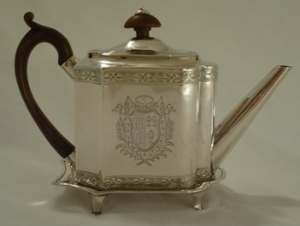
Joanne and Emmett Eldred
present:
Collecting George III Silver Teapots and Stands

Why would someone choose to collect George III silver
teapots and stands? Why that period, and why such a
narrow focus? For us the answer is fairly
straightforward.
First relates to size. Silver teapots and stands are
small so they are easily portable, and flexible to
display. Having at various times collected 18th century
American furniture, oriental rugs, and contemporary
paintings, it became apparent that space is something
that one must consider when collecting. Even with two
houses, there is need for a relatively few pieces of
furniture (e.g., highboys, secretaries, tables, etc), a
limited amount of floor area for rugs, and modest wall
space for hanging paintings. However, silver teapots and
stands can easily be displayed in numerous places, such
as on mantels, inside secretaries, on display shelves,
or on top of a variety of furniture surfaces......
click here 
|
Sue Rain writes:
...I wondered if you could give me any information about the
mirror illustrated in my attachments.
Many thanks for any help you can provide.
Sue Rain
The mirror is marked Birmingham, 1916. The maker is Synyer &
Beddoes -Harry Synyer & Charles Joseph Beddoes- (see my web site
at http://www.silvercollection.it/englishsilvermarksXS.html
http://www.silvercollection.it/englishsilvermarksXS.html
Giorgio Busetto
Melissa Magid writes:
...I have a silver tea strainer with Italian Marking '51 TO' and
an unidentified maker's mark. Do you have any idea who the maker
might be?
Thanks in advance for your help.
Regards,
Melissa Magid
The maker is Cottie Cesare fu Michele. See further
information in my web page at
http://www.silvercollection.it/SILVERSMITHSTO.html
I used your images to illustrate the mark.
Giorgio Busetto
Paul Skippen writes:
...I have included the photos of an object which is a bit of a
puzzle. Can your readers throw any light on it for me? It
measures 6cm x 1.3cm.
The glass inserted in the end is a magnifier. The other end
looks like it should go onto a chatelaine.
I was told it is probably a sewing aid, i.e. an early stitch
counter.
It is hallmarked for Adie & Lovekin (Birmingham) 1896.
Any help would be appreciated.
Paul Skippen
Giampiero Ierbulla writes:
...I send the photos of two silver bracelets that I have just
cleaned. Possibly, these objects were purchased in Ethiopia
around 1936.
Do you have any idea what they are?
Thanks for your help.
Giampiero Ierbulla
Leigh Ann Gherson writes:
...I am enjoying your website.I would like to know if any of
your members can identify these marks on this tray. I thought it
was French at first, but I have questions about the "Vieillard"
mark, as this appears different.
Kind Regards,
Leigh Ann Gherson
Luuk Goldhoorn writes:
... In your news letter 62 (July 2009) Martin Healy asked
about a watch made by Weill and Harburg.
Attached is a letter head of this firm. They were also importers
of musical boxes.
Regards
Luuk Goldhoorn
Charles C. Cage writes:
... Claudio Morelli's tray and salt cellars are Italian. The
faint bust is the head of Partenope, the mark used in the
Kingdom of Naples while under Napoleonic rule (and a little
later), 1808-1824. "5" represents the fifth standard of .834
silver. (4th standard was .917 silver, and 1st-3rd standards
were for gold.) Unfortunately, the maker's mark "GF, under a
branch" is not listed in either V. Donaver & R. Dabbene's
Argenti italiani dell'800, vol. 2: Punzoni di argentieri
italiani (Milan: San Gottardo, 1989) or Elio & Corrado Catello's
Marchi dell'Argenteria Napoletani dal XVI al XIX secolo
(Sorrento: Franco Di Mauro, 1996). It should be noted that the
piece is not necessarily from Naples, but could be from one of
the other cities of the kingdom: Aquila, Bari, Campobasso,
Chieti Foggia, Lecce, etc.
Charles C. Cage
Fausto de Longis writes:
... About the question of Claudio Morelli: the mark is
Napoli c. 1808. The maker is, possibly, Gaetano Ferraro or
Giovanni Fumo
Fausto de Longis
Charles C. Cage writes:
... Karen A. Lottie's spoon is Norwegian. "Fhd" is the city
mark of Fredrikshald (now Halden), and the maker "HH" is Hans
Hansen. He was born in Odense around 1808 and trained there. He
became a citizen of Fredrikshald/Halden in 1836, but his
citizenship was terminated in 1848; he is probably the same Hans
Hansen who was working later in nearby Sarpsborg and died there
in 1883. "13 ¼" is the fineness in lodd: 13.25/16 or .828.
"1837", of course, is the year. Ref: Jorunn Fossberg, Norske
Sølvstempler (Oslo: Universitetsforlaget, 1994), pp. 27 (mark
97), 34 (mark 74) & 37.
Charles C. Cage
An appeal of
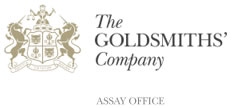

|
There is a real danger that hallmarking in the
UK could be abolished as part of a new initiative
launched by the Government on 7 April 2011 called
the Red Tape Challenge.
To prevent this 700 year old tradition disappearing
overnight, The Goldsmiths’ Company Assay Office
urges you to register your support for hallmarking
on the Red Tape website:
www.redtapechallenge.cabinetoffice.gov.uk/hallmarking
Background
The Red Tape Challenge has started by examining the
retail sector and asking the electorate for their
views on topics as diverse as ‘Sunday Trading’ and
‘Trading with the Enemy’. The aim is to reduce
regulation which stifles enterprise and industry.
The message from the Government appears to be that
every regulation highlighted will be abolished –
unless visitors to the website express sufficient
good reasons to convince Ministers that this
particular regulation must be kept.
Hallmarking is among the eight key topics on which
the population is invited to air their views from
now until 5th May 2011. There are other important
topics there too, of huge significance to retailers
and consumers.
We believe it is imperative to the British consumer
for the current and future UK Jewellery Industry to
maintain hallmarking as a statutory independent
service.
For further information on the importance of
hallmarking and why it should be saved download our
document ‘The Case for Hallmarking’ here.
You only have until 5th May 2011 to reply and help
to save hallmarking -
PLEASE ACT NOW!
Thank you for your support.
Dr Robert M Organ
Deputy Warden
|
"A PAGE per MONTH"
In this column we present a page
obtained from makers' brochures, books, auction catalogs,
advertising or whatever other printed paper, related to silver,
that may be of interest for ASCAS members.
The images will be published at a "low resolution" level and for
private and personal use only
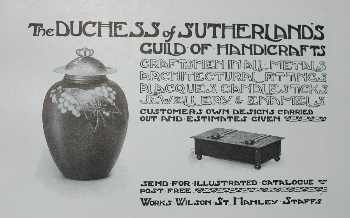
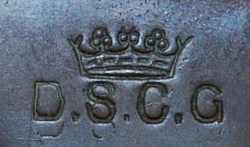
|
This month ASCAS presents an early 20th century
advertisement of
THE DUCHESS OF SUTHERLAND'S
GUILD OF HANDICRAFTS
Craftsmen in all metals
Architectural fittings
Plaques Candlesticks
Works: Wilson St. - Hanley Staffs.
The Guild was founded in 1898 by Millicent Duchess of Sutherlands as
The Potteries and Newcastle Cripples Guild. Art
metalwork began in 1902 under the guidance of
Francis Arthur Edwards. The Works were at Wilson St.
- Hanley, Staffs. In 1907 the guild was converted
into a limited liability company under the name of
The Duchess of Sutherland's Cripples Guild of
Handicrafts. The activity was closed in 1922.
|
"A WORD per MONTH"
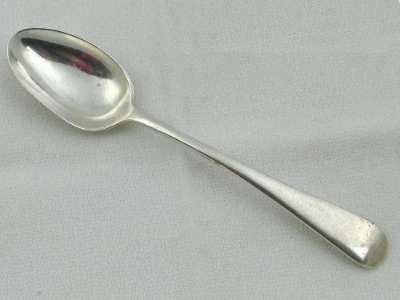
|
OLD ENGLISH SPOON
The "Old English" is one of the major flatware
patterns used in British silver.
In this pattern the stem of the handle widens gradually
towards the curved-end terminal and then turns downward.
It was popular from c. 1760 to c. 1820, but examples can
be found in earlier dates in serving pieces.....
more
|
"A SILVERSMITH per MONTH"
|
|
THE ALEXANDER CLARK MANUFACTURING CO
The business was
established in 1891 by Clift Alexander Mawer Clark at
138 Fenchurch Street, London. Manufacturing premises
were opened in 1894 at 29 Market Place, Oxford Street.
In 1900 the firm was active at Welbeck Works, Randall
Street, Sheffield, transferring its activity to James
Street Works, St. Paul's, Birmingham, in 1918.
The firm was active also at 188 Oxford Street and 29
Market Place, London (1906), 38-40 Mitre Street, Aldgate,
London (1921) and 17 Sycamore Street, Sheffield
(1921).....
more
|
"A BOOK ON MY SHELF"
In this column we present books, new
or ancient, dealing with silver in all its aspects (history,
marks, oddities...). This isn't a "book review" but only a fair
presentation of some useful "tools" that anyone may have in the
shelf of his bookcase.
ASCAS members are invited to contribute to this column
(click to enlarge images)
In the "book on my shelf" of this month Karin Sixl-Daniell
presents:
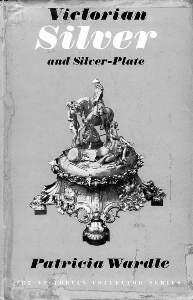
|
VICTORIAN SILVER AND SILVER-PLATE
by Patricia Wardle
Editor Country Life
The Victorian era is one of the most
interesting periods of in the history of English
silver. For it was at this time that the
products of the goldsmiths and silversmiths
assumed a new importance - as works of arts with
which British prestige could be enhanced at the
great International Exhibitions, as "testimonials"
or presentation pieces to honour prominent
personages, and as status symbol without which
no home was considered to be properly furnished.
On the one end, the best effort and skill of top
designers and craftsmen were lavished on
elaborate pieces which were worthy of comparison
with the finest products of the great
silversmiths of the Renaissance; on the other,
the invention of electro-plating and the spread
of mass-production methods ensured a plentiful
supply of stereotyped objects at prices which
all but the very poor could afford.....
In Victorian Silver and Silver-Plate Patricia
Wardle follows these different developments
through what was a very complex period.....
Thus this profusely illustrated book, with its
appendices, including reproductions of all the
Victorian marks of origin, constitutes a
valuable and authoritative work of reference for
all collectors.
|
"A CREST per MONTH"
In this column we present images and
descriptions of Crests and Mottoes of British, Irish and
Scottish families as engraved on silver items.
WALTER
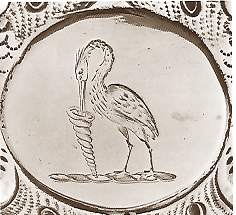
|
A Devonshire family. A
stork dipping beak into a whelk-shell, erect
The crest was found on a sterling silver Punch Bowl,
marked London 1795, maker John Sutton
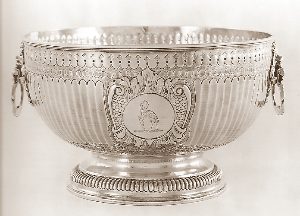
|
Closing our May 2011 edition of ASCAS
Newsletter I hope you have appreciated its content.
Your comments, suggestions and advices will be of great help.
My thanks to Charles C. Cage, Fausto de Longis, Jayne Dye,
Joanne and Emmett Eldred, Ricardo Ferreira, Luuk Goldhoorn,
Giampiero Ierbulla, Melissa Magid, Prof. David N. Nikogosyan,
Sue Rain, Karin Sixl-Daniell and Paul Skippen for their
invaluable contributions.
Giorgio Busetto
Secretary
DISCLAIMER AND PRIVACY POLICY
ASCAS is a community of people having a common
interest in antique silver.
It is a non-profit association without commercial links.
Membership is open to whomever has a true interest in
this subject matter.
ASCAS has no real property and no fees are requested nor
accepted from members.
ASCAS keeps in touch with its members only through
periodical newsletters, e-mails and web-site updating
and ignores and is not responsible for any other
activity pursued by its members.
Likewise, ASCAS is not responsible for opinions,
evaluation and images displayed, and in any form
published or supplied for publication, by its members
who, in any case, maintain the property of their works
and assure the respect of national and international
legislation about Intellectual Property.
ASCAS does not have the full addresses of its members (only
town, country and e-mail address are requested for
membership).
ASCAS handles and protects with care its members' e-mail
addresses, will not disclose the addresses to third
parties, will use this information only to reply to
requests received from members and for communications
strictly related to its activity.
These rules are expressly accepted by submitting the
membership request.
|
|
 newsletter
# 84 May 2011
newsletter
# 84 May 2011












